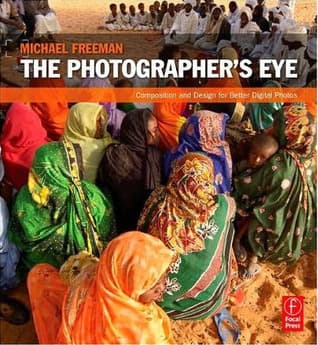
Book Review Summary: The Photographer's Eye: Composition and Design for Better Digital Photos
Introduction
"The Photographer's Eye: Composition and Design for Better Digital Photos" by Michael Freeman is a highly regarded book that offers insights into the art and craft of photography. With its focus on composition and design, this book has resonated with photographers worldwide, helping them develop their skills and create compelling digital photographs. In this article, we will delve into the book's content, analyze readers' opinions, and summarize the reasons for both recommending and not recommending it.
About Michael Freeman
Michael Freeman, the author of "The Photographer's Eye," is a renowned photographer and author with a rich background in the field. Born in England in 1945, Freeman took a Masters in geography at Brasenose College, Oxford University, before working in advertising in London. His passion for photography took him on a journey up the Amazon River, where his work caught the attention of Time-Life, leading him to pursue a full-time photographic career. Over the years, Freeman has published more than 100 books, including over 40 books on photography. His expertise in photography education has earned him numerous accolades, including the Prix Louis Philippe Clerc from the French Ministry of Culture.
Analysis of Views
- Inspiring and Thought-Provoking: Many readers found the book inspiring and thought-provoking, praising its ability to help them see photographs through the eyes of a photographer. The book's high ambition and the thought process behind the images presented in it were highly appreciated.
- Comprehensive Coverage: The book covers both traditional approaches to composition and design as well as new digital techniques that have emerged with digital photography. Readers appreciated the comprehensive coverage of various aspects of photography, which made it a valuable resource for photographers at all levels.
- Practical Examples and Tips: The book provides numerous examples and tips that help readers understand how photographers think and create their images. Readers found these practical examples and tips to be highly useful in improving their photography skills.
- Challenging Concepts: Some readers found the book challenging due to its exploration of complex concepts such as color, lines, shapes, and Gestalt principles. While these concepts are important, some readers felt they were not particularly thought-provoking or new to experienced photographers.
- Limited Practical Application: A few readers expressed that while the book provided valuable insights into composition and design, it was difficult to apply all the concepts immediately in real-world shooting situations. They found it challenging to digest all the information at once and wished for more practical exercises to reinforce their learning.
- Lack of Focus on Technical Aspects: A few readers felt that the book did not delve deeply into technical aspects such as shutter speed, aperture, ISO settings, and flash. While these technical aspects are important, some readers felt that they were not adequately covered in the book.
Reasons for Recommendation
- Comprehensive Coverage: Readers recommend "The Photographer's Eye" for its comprehensive coverage of composition and design in photography. The book provides a solid foundation for understanding the principles of visual art and how they apply to photography.
- Practical Examples and Tips: The book's practical examples and tips are highly appreciated by readers, as they help them understand how to apply composition and design concepts to their own photography. These examples and tips are seen as valuable resources for improving one's photography skills.
- Inspirational Content: The book's inspiring content, which showcases award-winning photographs and the thought processes behind them, is a significant reason for its recommendation. Readers find it motivating and appreciate the insights it provides into how great photographs are created.
Reasons for Not Recommendation
- Limited Practical Application: Some readers find that while the book provides valuable insights into composition and design, it does not offer enough practical exercises or guidance on how to apply these concepts in real-world shooting situations. This lack of practical application makes it challenging for readers to immediately implement what they have learned.
- Lack of Focus on Technical Aspects: A few readers feel that the book does not delve deeply enough into technical aspects such as shutter speed, aperture, ISO settings, and flash. They feel that these technical aspects are equally important in understanding photography and wish for more coverage of them in the book.
Conclusion
"The Photographer's Eye: Composition and Design for Better Digital Photos" by Michael Freeman is a highly regarded book that offers valuable insights into photography composition and design for digital photographers. While some readers appreciate its comprehensive coverage and practical examples, others find it challenging to apply the concepts immediately in real-world shooting situations. Additionally, some feel that the book could have provided more depth on technical aspects such as shutter speed, aperture, ISO settings, and flash. Overall, "The Photographer's Eye" is recommended for those looking to improve their photography skills through a deeper understanding of composition and design principles.